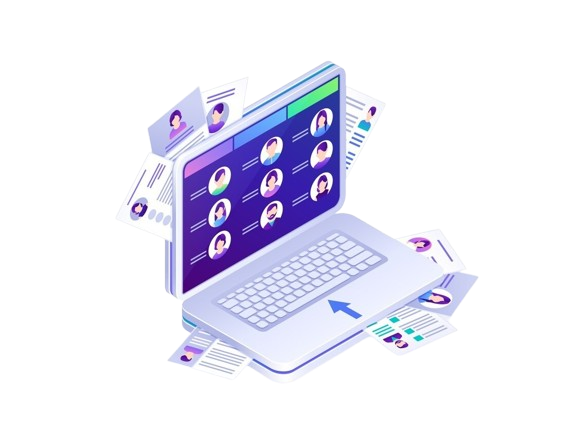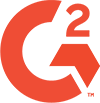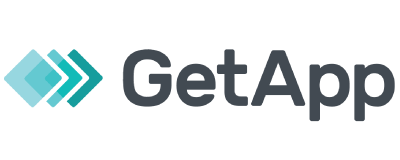A talent pool is a database of potential candidates who can fill both short-term and long-term employment openings. This database typically includes applicants interested in joining an organization, allowing the company to cultivate relationships with candidates whose skills and expertise align with its needs. However, building and maintaining a diverse talent pool can be overwhelming if you don't know where to start. In this article, you will learn how to do it along with a tool that can make this process a breeze.
6 Steps To Build A Diverse Talent Pool
Building an effective and diverse talent pool not only reduces time-to-hire but also ensures that you always have a pipeline of qualified candidates ready to meet your company’s future hiring needs. Here are 6 key steps to build one effectively.
Create Your Database
The first step for you to create a diverse talent pool is to create a comprehensive candidate database. It should capture a wide range of talent from varied backgrounds.
- Collect candidate information: Source data from job boards, LinkedIn, professional networks, and diversity-focused career fairs to gather details like skills, experience, education, and demographics, ensuring compliance with privacy laws like GDPR or CCPA.
- Use inclusive outreach: Craft inclusive job descriptions and target underrepresented groups, including diverse ethnicities, genders, abilities, and socioeconomic backgrounds, to attract a broad candidate pool.
- Leverage technology: Use an applicant tracking system (ATS) to organize, filter, and manage candidate profiles efficiently, enabling quick identification of diverse talent.
- Maintain and update: Regularly refresh your database to keep candidate information current and reflective of a diverse talent spectrum for ongoing and future hiring opportunities.
Using Manatal: Once you have created/imported profiles into your candidate database, you can easily view them in one view. From there, you can update their statuses in the hiring pipeline, share them with other users in your organization or enrich the profile data by adding additional details from social platforms automatically. This creates a solid starting point to having a rich database for you to work with in the long term.
{{cta}}
Crafting and Distributing Inclusive Job Advertisements
Objective: Attract a diverse range of candidates by creating inclusive job ads and strategically distributing them.
Steps:
- Develop Inclusive Job Descriptions
- Use tools like Textio or Gender Decoder to identify and eliminate biased language.
- Focus on essential qualifications to avoid deterring candidates who may not meet every listed requirement.
- Encourage applications from all backgrounds by stating your commitment to diversity and inclusion.
- Select Appropriate Platforms
- Post on mainstream job boards and niche platforms such as:
- PowerToFly – connects companies with women in tech and underrepresented groups.
- DiversityJobs.com – caters to diverse candidates across various industries.
- Diverse & Remote – focuses on remote opportunities for diverse professionals.
- Post on mainstream job boards and niche platforms such as:
- Collaborate for Extended Reach
- Partner with universities, alumni associations, and professional organizations that serve diverse populations to promote job openings.
- Monitor and Optimize Distribution
- Utilize tracking tools or your recruitment platform’s analytics to assess the performance of different job boards and refine your posting strategy accordingly.
Engaging Former Employees and Internal Talent
Objective: Strengthen your talent pipeline by reconnecting with alumni and nurturing existing staff.
Steps:
- Establish an Alumni Network
- Create a platform or community where former employees can stay connected, receive company updates, and learn about new opportunities.
- Offer Exclusive Opportunities
- Provide alumni with early access to job postings, streamlined re-entry processes, and tailored career support to encourage re-engagement.
- Identify and Develop Internal Talent
- Use performance reviews and manager feedback to spot employees with growth potential.
- Implement mentorship programs and training sessions to prepare them for advanced roles.
- Track Progress
- Utilize tools like Manatal to monitor internal candidates' development and readiness for new positions.
Implementing a Structured Employee Referral Program
Objective: Leverage employee networks to source high-quality candidates efficiently.
Steps:
- Design a Clear Referral Policy
- Outline eligible roles, reward structures, and timelines.
- Communicate this policy through internal channels and meetings.
- Promote the Program Internally
- Encourage participation through company-wide emails, intranet postings, and recognition of successful referrers.
- Incentivize Participation
- Offer a mix of financial and non-financial rewards, such as bonuses, extra vacation days, or charitable donations in the employee's name.
- Combine with Sourcing Tools
- Integrate your referral program with candidate sourcing tools to expand your reach and identify top talent.
Utilizing Resume Database Platforms
Objective: Expand your talent pool by accessing a wide array of candidate profiles through resume databases.
Steps:
- Select Appropriate Platforms
- Consider using:
- Indeed Resume Database – offers access to millions of resumes with advanced search filters.
- Jobvertise – allows free job postings and resume searches.
- LinkedIn Recruiter – provides a vast network of professionals across industries.
- Consider using:
- Implement Advanced Search Techniques
- Use Boolean search operators and filters to narrow down candidates based on skills, experience, and location.TalentGuard+5AIHR+5hrmorning.com+5
- Regularly Update Your Talent Pool
- Keep your database current by adding new profiles and updating existing ones with recent information.
- Ensure Compliance with Privacy Regulations
- Adhere to data protection laws such as GDPR when handling candidate information.
Including Remote Talent in Your Recruitment Strategy
Objective: Broaden your candidate reach by embracing remote work opportunities.
Steps:
- Highlight Remote Work Options
- State remote work possibilities in job postings to attract candidates seeking flexibility.
- Post on Remote-Focused Job Boards
- Utilize platforms like:
- We Work Remotely – offers a wide range of remote job categories.
- FlexJobs – specializes in remote and flexible job listings.
- Remotive – focuses on remote work opportunities across various industries.
- Utilize platforms like:
- Leverage Virtual Collaboration Tools
- Use video conferencing and project management tools to facilitate interviews and onboarding processes for remote candidates.
- Promote Inclusivity
- Ensure that remote work policies accommodate individuals with disabilities or caregiving responsibilities, fostering a more inclusive work environment.
Maintaining and Nurturing Your Talent Pool
Objective: Keep your candidates engaged, informed, and interested in potential opportunities.
Steps:
- Implement Regular Communication
- Send monthly or quarterly newsletters with company updates, industry news, and career development resources.
- Personalize Job Alerts
- Segment your talent pool based on skills and interests to send targeted job notifications.
- Enrich Candidate Data
- Regularly update candidate profiles with new skills, certifications, or experiences to ensure accurate matching for future roles.
- Utilize Applicant Tracking Systems
- Employ tools like Manatal to automate communications, track candidate interactions, and manage your talent pool effectively.
Conclusion
Having a talent pool can help you improve your recruitment process and outcomes by giving you access to a ready supply of qualified candidates for your current and future needs. To create a talent pool that works for you, follow the strategies outlined in this article, such as creating a candidate database, crafting inclusive job ads, leveraging employee referrals, and maintaining regular communication with your talent pool.
Frequently Asked Questions
Q: What is a global talent pool?
A: A global talent pool is a database of potential candidates from various geographic locations worldwide. It allows organizations to access a diverse range of skills and experiences, facilitating international recruitment and the ability to fill roles that require specific regional expertise.
Q: Why are talent pools important to organizations and HR departments?
A: Talent pools are crucial because they:
- Reduce Time-to-Hire: Having pre-identified candidates accelerates the recruitment process.
- Enhance Quality of Hire: Engaging with potential candidates over time allows for better assessment of fit and skills.
- Improve Employer Branding: Maintaining relationships with candidates fosters a positive image of the organization.
- Provide a Competitive Advantage: Access to a curated list of candidates ready to fill positions as they arise.
Q: How can technology, like AI, help manage and optimize a talent pool?
A: Artificial intelligence (AI) can revolutionize talent management by streamlining processes and providing actionable insights to optimize workforce potential. With AI-driven tools, organizations can enhance efficiency and foster a more engaged, skilled workforce. Key benefits include:
- Resume Screening: AI systems quickly filter thousands of resumes to identify top candidates, minimizing time and human error.
- Performance Analysis: Advanced analytics evaluate employee performance and forecast future talent needs for strategic planning.
- Personalized Training: AI customizes training programs to match individual skills and career goals, boosting engagement and retention.
- Workforce Trend Prediction: Machine learning provides insights into workforce trends, enabling proactive adaptation to changes.
Q: How can organizations leverage social media to build their talent pool?
A: Social media offers organizations powerful tools to strengthen their employer brand and connect with top talent. When engaging or attracting talent on social media, companies can attract candidates aligned with their mission and values. Key strategies include:
- Showcasing Culture: Share compelling content, employee stories, and company values on platforms like LinkedIn, Twitter, and Instagram to draw in like-minded candidates.
- Industry Engagement: Participate in relevant conversations and groups to establish thought leadership and connect with passive candidates.
- Targeted Outreach: Use advanced targeting features on platforms like LinkedIn and Facebook to reach specific demographics.
- Analytics-Driven Refinement: Leverage platform analytics to assess outreach effectiveness and optimize talent acquisition strategies.





.png)






















.webp)

.webp)

.webp)
